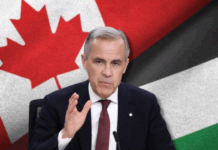Just when you thought cricket couldn’t surprise you anymore, the International Cricket Council (ICC) has announced some rule changes across Tests, ODIs, and T20Is. And yes, these changes are more than just tweaks — they’re set to shake things up on the field.
From a modified two-ball rule in ODIs to the end of those outrageous “bunny-hop” catches at the boundary, here’s everything you need to know — without the jargon.
Say Hello to Reverse Swing Again
Let’s start with the biggest headline — the two-ball rule in ODIs is getting a facelift. For over a decade, white-ball cricket fans have lamented the loss of reverse swing in the final overs.
Why? Because of those two shiny new balls used from either end, both staying far too fresh till the death. But that’s changing now.
- What’s new? Instead of using two balls till the 25th over, teams will now use both balls up to the 34th over.
- From the 35th over onwards, the fielding side must pick one of the two balls to use for the rest of the innings.
- And if the match is 25 overs or less, it’s back to just one ball.
Why this matters: This move is tailor-made for bowlers — especially reverse swing specialists who’ve been rendered ineffective by balls that refuse to age. Expect more drama at the death!
Concussion Substitutes Just Got More Structured
The concussion substitute rule also sees a serious upgrade — and honestly, it makes perfect sense.
Instead of random replacements, teams must now pre-nominate five substitutes ahead of each game, one for each role:
- A batter
- A wicketkeeper
- A spin bowler
- A seam bowler
- An all-rounder
This ensures like-for-like replacements, keeping the playing field fair. And yes, if a substitute also gets injured (talk about bad luck), the match referee may allow another replacement even outside the original five.
Bunny Hop Boundary Catches Are History
This one’s going to divide fans. You know those jaw-dropping moments when a fielder leaps from outside the boundary line, taps the ball mid-air, and pulls off a relay catch? That’s the ‘bunny-hop’ — and it’s now officially illegal.
- What’s banned: Any catch where a fielder jumps from beyond the boundary without being grounded inside before touching the ball.
- What’s still legal: The fielder starts inside the boundary, taps the ball up, steps out due to momentum, then jumps back in to complete the catch.
The MCC’s new wording ensures fielders must establish control inside the field to ensure a fair play. Although the official law comes into effect in October 2026, it will start showing up in ICC match playing conditions as early as next week.
When Do These Changes Take Effect?
- Test matches: From June 17, 2025
- ODIs: From July 2, 2025
- T20Is: From July 10, 2025
- Bunny-hop ban: ICC playing conditions in June 2025, full law by October 2026
Stay tuned to Brandsynario for the latest news and updates.






































